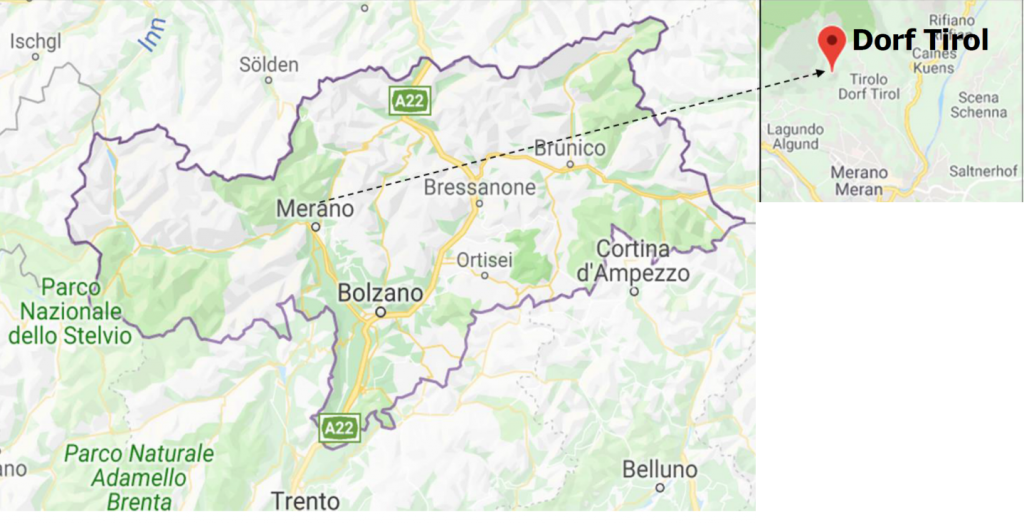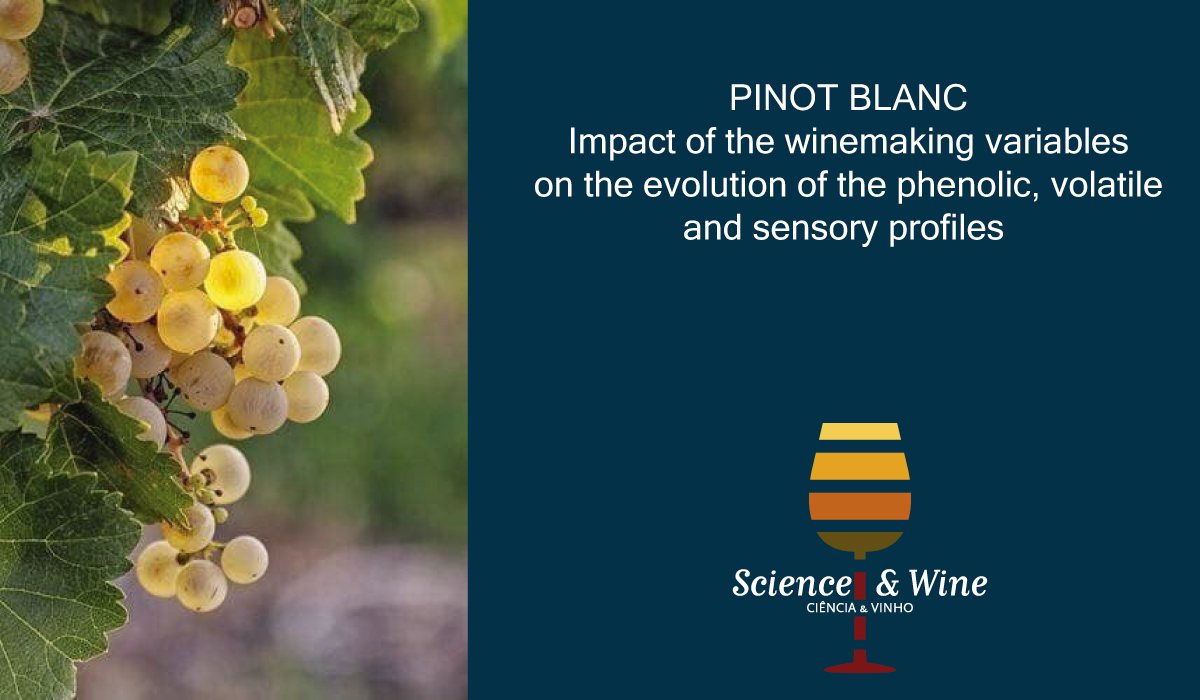Dupas de Matos, A.1,2, Longo, E.1,3, Chiotti, D.4, Pedri, U.4, Eisenstecken, D.5, Sanoll, C.5, Robatscher P.5 and Boselli, E.1,3
AFFILIATIONS
1 Faculty of Science and Technology, Free University of Bozen-Bolzano, Piazza Università 5, 39100 Bolzano, Italy
2 FEAST and Riddet Institute, Massey University, Palmerston North 4410, New Zealand
3 Oenolab, NOI Techpark, via Alessandro Volta 13, 39100 Bolzano BZ, Italy
4 Institute for Fruit Growing and Viticulture, Laimburg Research Center, Laimburg 6, I-39051 Pfatten, Italy
5 Institute for Agricultural Chemistry and Food Quality, Laimburg Research Center, Laimburg 6, I-39051 Pfatten, Italy
Pinot blanc is a grape widely cultivated variety in regions of Germany, Austria, France and Italy. Outside Europe, it can be found in Argentina, Brazil, Canada, China, New Zealand, South Africa, United States and Uruguay [1]. This wine has generally been described as greenish-yellow to gold in color, with a relatively sour taste and from light to moderate body [2]. According to the production regulations for Pinot blanc South Tyrol DOC [3], this wine should look straw-yellow in colour with greenish hints, dry, with a noticeable acidity and a pleasant typical aroma. Its aroma has been characterized by descriptors such as apple, pear, yellow fruits or even by mango and spicy. The aim of this work was to identify the effects in the quality of Pinot blanc over time due to winemaking, by analysis of the changes to its chemical and sensory profiles. The grapes used were harvested all in the same day and in the same vineyard (Dorf Tirol/Tirolo, South Tyrol – Italy; see Figure 1), and their processing started together, to avoid sampling effects.

Then, two different winemaking practices were applied (in parallel). Namely, the two vinifications were distinguished by three operations at different stages: a pre-fermentative cold maceration, autolysate addition during the fermentation and the use of bentonites (Table 1).

Both vinifications were followed in triplicates from grape pressing to the bottled wine stored for nine months. The main oenological profile (YAN, organic acids, total acidity, pH, reducing sugars, potassium, free and total SO2, volatile acidity, percentage of alcohol) was investigated by classical infrared analysis; LC-DAD/fluorescence (in series) and LC-MS/MS were applied to the identification of the phenolic compounds. Then, SPME-GC-MS analysis was employed to study the volatile profile overtime. Finally, a sensory panel was trained to perform the sensory evaluation of the wines parallelly to the instrumental analyses, allowing to discuss sensory descriptors and their trend together with the chemical variables. After pre-processing, the data were studied by statistical analysis.
Firstly, the evaluated percentage of alcohol and the concentration of glucose and fructose differed between the obtained wines. Residual sugars were more concentrated in the wines obtained with macerated grapes (experimental); parallelly, the percentage of alcohol was higher in the non-macerated (control) wines. This suggested that the pre-fermentative maceration slightly hampered the yeast activity; in fact, the difference in alcohol content in between the two sets of final wines did not exceed on average 0.5 %. Besides, several phenolic compounds and the main volatile compounds were identified in the wines (example in Figure 2).

Among the identified compounds, astilbin and trans-caftaric acid showed significant differences according to vinification; S-glutathionylcaftaric acid correlated instead with a temporal trend. Besides, HPLC-fluorescence analysis focussed on the monomeric and oligomeric flavan-3-ol compounds and it showed the presence of an effect of time-evolution and vinification on gallocatechin and epigallocatechin, respectively. Regarding the volatile compounds (examples in Figure 3), after nine months of storage the control wine showed higher amounts of ethyl esters, acetate esters and octanoic acid, whereas higher alcohols characterized the wines obtained with pre-fermentative cold maceration.

The sensory profile of V1 was characterized by notes of apple and tropical fruit with a higher overall judgment score, whereas V2 was described by olfactory intensity, spicy and pear attributes. In conclusion, this work allowed to identify better the chemical markers differentiating the two styles of Pinot blanc and to discuss the chemical profile in relation to the differences in sensory profiles. The pre-fermentative cold maceration showed relevant impacts on the chemical and sensory quality and style of the obtained Pinot blanc wines.
See all at:
Dupas de Matos, A. et al. Pinot Blanc: Impact of the Winemaking Variables on the Evolution of the Phenolic, Volatile and Sensory Profiles. Foods, 2020, 9(4), 499. https://doi.org/10.3390/foods9040499
Correspondence to: edoardo.longo@unibz.it

Dr. Edoardo Longo
RTD Jr. – Faculty of Science e Technology, UNIBZ
https://www.unibz.it/it/faculties/sciencetechnology/academic-staff/person/35783-edoardo-longo
https://www.researchgate.net/profile/Edoardo_Longo
Since June 2018: Junior Researcher – Free University of Bozen-Bolzano
2015 – 2018: Post-doctoral associate – Free University of Bozen-Bolzano
2013 – 2015: Post-doctoral associate – Diamond Light Source Ltd, UK
2013: PhD graduation – University of Padova
REFERENCES
[1] Robinson, J. et al.: A Complete Guide to 1368 Vine Varieties, Including Their Origins and Flavours; Penguin Books Ltd: London, UK, 2013; ISBN 9781846144462
[2] https://www.vinialtoadige.com/it/vitigni/pinot-bianco/22-12228.html. Vini Alto Adige. Pinot Bianco. 2019.
[3] Decreto 6/8/2010; Gazzetta Ufficiale Della Repubblica Italiana: Roma, Italy. Ministero Delle Politiche Agricole, 2010b, p. 197.


[…] Science and Wine: Pinot Blanc—Impact of the Winemaking Variables on the Evolution of the Phenolic,… […]